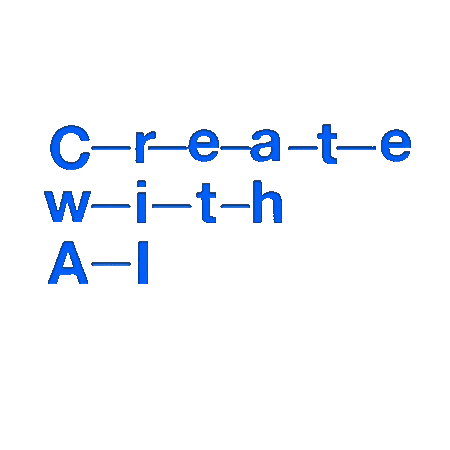MuseMorphose: : Transformerを用いたVAEによる音楽のスタイル変換
Wu, S.-L. and Yang, Y.-H. (2021) ‘MuseMorphose: Full-Song and Fine-Grained Music Style Transfer with Just One Transformer VAE’
長期の時間依存性を学習できるTransformerの利点とコントロール性が高いVAEの利点。この二つを組み合わせたEncoder-Decoderアーキテクチャで、MIDIで表現された音楽のスタイル変換(Style Transfer)を実現。
2021
Overview - 何がすごい?
長期の時間依存性を学習できるTransformerの利点とコントロール性が高いVAEの利点。この二つを組み合わせたEncoder-Decoderアーキテクチャで、MIDIで表現された音楽のスタイル変換(Style Transfer)を実現する。
Abstract
Transformers and variational autoencoders (VAE) have been extensively employed for symbolic (e.g., MIDI) domain music generation. While the former boast an impressive capability in modeling long sequences, the latter allow users to willingly exert control over different parts (e.g., bars) of the music to be generated. In this paper, we are interested in bringing the two together to construct a single model that exhibits both strengths. The task is split into two steps. First, we equip Transformer decoders with the ability to accept segment-level, time-varying conditions during sequence generation. Subsequently, we combine the developed and tested in-attention decoder with a Transformer encoder, and train the resulting MuseMorphose model with the VAE objective to achieve style transfer of long musical pieces, in which users can specify musical attributes including rhythmic intensity and polyphony (i.e., harmonic fullness) they desire, down to the bar level. Experiments show that MuseMorphose outperforms recurrent neural network (RNN) based prior art on numerous widely-used metrics for style transfer tasks.
Overview
ステップ #1
TransformerのDecoderを実装。その際に、時間軸にそって小節単位で変化する条件付けを可能にするために pre-attention, in-attention, post-attention の三つの仕組みを試す(後述)。その中で in-attentionが優れていることがわかった。
ステップ #2
Transformer Encoderを学習。VAEの目的関数に沿って学習することで、条件付けできる生成モデルに。
Architecture
Encoder
Transformerベースのエンコーダー 小節ごとのトークンを入力に512次元のembeddingベクトルを出力。
一般的な次のトークンを予測するモデルの隠れ層の出力(のavgpool)をembeddingベクトルとして利用。


Decoder
デコーダもEncoder同様に次のトークンを予測するモデル。 ただし、ここではEncoderの出力のembeddingベクトルも使われる。
Encoderの出力のembeddingベクトルは各 self-attention layerの中で使われる(in-attention) (右図)
その他にも self-attention layerの前後に一度だけ embeddingベクトルを足す pre/post-attentionも試したが、in-attentionが一番よかった。

MuseMorphose: ユーザのコントロール
曲のセグメント(小節) ごとに の 種類(この研究では )のattributeを指定できるようにする。 : 生成されるメロディ
→ 曲の特定の箇所だけ盛り上げる、落ち着かせるといったコントロールが可能に。
小節単位でコントロールできる条件(attribute)としては、
- Rhythm Intensity リズム強度 - 拍数に対するオンセットの割合 (B: ビートの数)
- Polyphony score ポリフォニー - 各四分音符単位で平均して幾つの音符が鳴らされている(オンセット or サステイン) か

全体の流れ
K: 小節数 : k番目の音符列
: embedされた条件 (attribute)
k番目の小節のタイムステップ
は EncoderのAttentionレイヤーの最初のタイムステップでのアウトプット を入力として VAEのモデルを採用。それぞれ学習できる重み と で 正規分布の と に写像.
はそこからサンプリングされる.
Data
MIDIをベースにしたシンボリックな情報で音楽を扱う。データセットは Cleansed Lakhデータセットを利用。
PerformanceRNNで提案されたNote-On/Note-offに加えて、前のイベントからの時間差やベロシティ(音の強さ)で音楽を表現するが、それだけだと小節の中での位置の情報が抜けている。
そこで Pop Music Transformerで提案された Revamped MIDI-derived events (REMI) と呼ばれるフォーマットを利用することにする。
REMIでは次のような情報を扱う
- BAR(小節) と POSITION (小節内での位置 1-16)
- TEMPO (テンポ)
- NOTE-ON / NOTE-DURATION (ノートオンとその音符の長さをセットで)
Results
- 原曲の特徴を残しつつ、条件付けに従った音楽性に飛んだ音楽を、多様性を持って生成できることを確認
原曲
生成例
リズムの強度・ポリフォニー共に高い
徐々にリズムの強度・ポリフォニーを高くしていくと
徐々にリズムの強度・ポリフォニーを下げていく
長い曲も! (121小節)
原曲
生成例
リズムの強度・ポリフォニー共にあげると...
Further Thoughts
- 最近の研究についてよくまとまっているのでサーベイ論文としても利用できる (特にconditioningについて)
- 音楽の生成モデルの定量的な評価の仕方としても勉強になる
- まだ完全に理解できてない部分も多いのであとで読み直す!!
Links
Transformerの原論文
Attention is All You NeedTransformerを使った音楽生成
Music transformer: Generating music with long-term structure